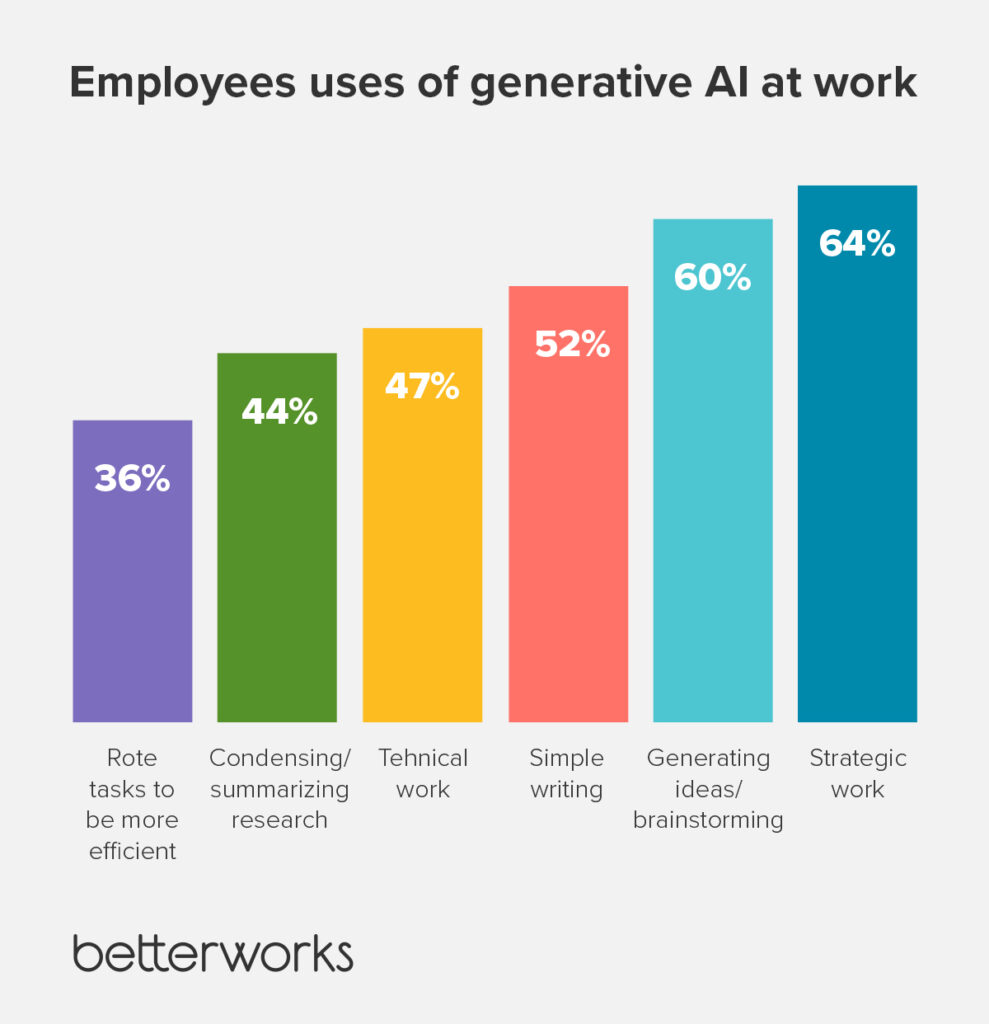We stand at a pivotal moment in business, one where the tides of innovation are reshaping the way we work. Generative AI, a technology that burst onto the scene in late 2022 with the introduction of ChatGPT, presents a sea of possibilities and challenges unlike any we’ve encountered before. Business concerns over the safe use of generative AI in the workplace are causing many companies to anchor safely in port until there is a better, more advanced map to guide them. While the future remains uncharted, one thing is clear: organizations cannot afford to stay in the harbor in this digital revolution. They must resolve the conundrum of how to harness generative AI safely, to go full speed ahead without getting swept away.
The data on this dilemma paints a fascinating picture. According to a recent survey by Cisco, 97% of respondents said the urgency to use AI technology at their companies has accelerated since mid-2023. Over half predict negative consequences if they fail to act, and yet, just 14% say they are fully prepared to make that transition.
The concerns are vast. Data privacy, hacking by bad actors, ethical considerations, the inadvertent introduction and amplification of bias from AI algorithms, a lack of transparency in how AI models arrive at certain outputs, and a fear over a lack of trust developing within organizations. Leaders are also concerned about job loss, the challenges of upskilling workers to adapt to AI, and the cost of adoption and development.
But here’s the counterbalance: The technology is here to stay and employees are already using generative AI in surprising ways even if their companies are prohibiting its use. A recent Betterworks survey reveals a disconnect between employee action and employer priorities:
- 54% of employees are already using generative AI in their daily work
- 41% of employers prioritize evaluating its safe use; another 8% ban its use outright, and 41% are either asking questions but not using generative AI internally or are not seriously considering the value it might bring to their organizations
This discrepancy speaks volumes. Employees recognize the transformative potential of generative AI and over half are taking the initiative to leverage it for greater efficiency, creativity, and productivity. They are using generative AI to do everything from strategic and technical work to brainstorming and condensing research to writing.

Are employees using generative AI safely?
It’s clear that employees are going to harness the efficiency gains generative AI provides, with or without your IT, security, and legal teams. At best, you’ve lost the ability to train your own enterprise-specific AI, and at worst, your employees are training open-source AI models with your company’s business intelligence.
The solution for safely using generative AI demands a strategic approach, not fear-driven paralysis. In our recently released safe AI guide, Taking the Reins on Managing Generative AI, we provide 11 recommendations for how to safely approach and leverage generative AI within your organization.
Here are three key principles to guide you toward safe AI use and unlock the immense productivity and efficiency benefits it offers.
Be proactive, don’t sit on the sidelines
Caution is essential, especially given the creation capacity and emergent capabilities of AI, but too much caution carries the opportunity cost of inaction. Instead, embrace AI responsibly. Develop clear policies outlining acceptable practices and consequences for misuse. Establish a framework for using AI that encourages wise use and upholds company values. Implement training programs that equip employees with the knowledge and skills to use generative AI safely and ethically. Remember, AI is meant to augment human capabilities, not replace them. Foster a culture of collaboration and open communication where concerns about safe AI use are readily addressed.

Protect, don’t prohibit
Think of generative AI as a powerful tool, not a forbidden fruit. You can develop a secure, walled-garden environment where employees can input company content into a generative AI engine that prevents that information from being shared outside the confines of the organization. This allows employees to reap the benefits of GenAI’s intelligence without exposing sensitive and private data and information to the outside.
Keep bias at bay
According to our survey findings, employees, especially women, are legitimately concerned about bias seeping into their company’s processes through GenAI, perpetuating and amplifying bias and misinformation.
According to the Betterworks AI survey, 57% of employees are “very” or “somewhat” concerned that generative AI could introduce bias — even while 61% say they think GenAI has the potential to reduce bias in numerous HR practices, including in the writing of performance reviews. Clearly, there’s confusion.
Generative AI is simply a mirror reflecting the data it’s trained on. Biased data breeds biased outputs, perpetuating inequalities and amplifying existing discrimination. To combat bias in AI, embrace diversity and inclusion from the very beginning by ensuring that your internal teams building these models are diverse and representative. See to it that your training data accurately represents the real world, encompassing a broad spectrum of perspectives and experiences. Conduct regular bias audits and refine your models to eliminate unfair tendencies.
Organizations can also adopt a domain-specific approach to implementing GenAI by developing an AI architecture that guides the large language models (LLMs) upon which GenAI depends. This approach enables companies to train an LLM to respond in line with their core principles and values and provide accurate and trustworthy outcomes that will not suffer from bias. Betterworks follows this practice in the development of its generative AI-assisted solution capabilities. Remember, safe AI use starts with ethical data and ongoing vigilance against hidden biases.
You have the power to guide the safe use of generative AI
Navigating the generative AI wave demands courage, not caution. By adhering to these principles — proactive engagement, protective measures, and unwavering commitment to bias mitigation — you can begin to chart a course toward safe generative AI use and unlock a future where this powerful technology empowers individuals, drives productivity, and strengthens your organization.
The future of work isn’t preordained. We, as a collective force, have the power to shape it. By harnessing the power of generative AI safely and responsibly, we can create a rising tide that lifts all boats.
To explore the other eight recommendations, download our safe AI guide.
11 steps to using AI safely in your organization


